-
 Bitcoin
Bitcoin $78,719.2006
-5.56% -
 Ethereum
Ethereum $1,583.1656
-12.44% -
 Tether USDt
Tether USDt $0.9998
0.01% -
 XRP
XRP $1.9088
-10.76% -
 BNB
BNB $560.9083
-5.15% -
 USDC
USDC $1.0004
0.04% -
 Solana
Solana $106.3174
-11.37% -
 Dogecoin
Dogecoin $0.1478
-12.16% -
 TRON
TRON $0.2291
-2.88% -
 Cardano
Cardano $0.5760
-11.29% -
 UNUS SED LEO
UNUS SED LEO $8.9099
-2.51% -
 Chainlink
Chainlink $11.2991
-11.88% -
 Toncoin
Toncoin $2.9368
-9.64% -
 Stellar
Stellar $0.2262
-10.37% -
 Shiba Inu
Shiba Inu $0.0...01137
-7.50% -
 Avalanche
Avalanche $16.0961
-7.76% -
 Sui
Sui $1.9171
-12.64% -
 Hedera
Hedera $0.1405
-12.85% -
 MANTRA
MANTRA $6.0521
-3.00% -
 Polkadot
Polkadot $3.6466
-7.23% -
 Bitcoin Cash
Bitcoin Cash $274.4163
-8.88% -
 Dai
Dai $1.0002
0.01% -
 Litecoin
Litecoin $70.2845
-14.71% -
 Ethena USDe
Ethena USDe $0.9989
-0.04% -
 Bitget Token
Bitget Token $4.1349
-7.18% -
 Pi
Pi $0.5928
-11.07% -
 Monero
Monero $201.4462
-6.45% -
 Hyperliquid
Hyperliquid $10.5838
-10.85% -
 Uniswap
Uniswap $5.1326
-12.02% -
 OKB
OKB $51.8936
-1.05%
What is token economics in blockchain and how to design it?
Successful token economics require defining clear utility, a fair distribution model (e.g., airdrops, staking), managing inflation/deflation, establishing robust governance, and prioritizing security through smart contract audits.
Mar 13, 2025 at 09:45 am

What is Token Economics in Blockchain and How to Design It?
Key Points:
- Understanding Token Utility: A deep dive into the core functionalities and value proposition of a token within its ecosystem. This includes examining its use cases, scarcity, and how it facilitates interactions within the blockchain network.
- Defining Token Distribution: A detailed analysis of various token distribution models, including their advantages, disadvantages, and implications for long-term token value and ecosystem health. This covers aspects like airdrops, pre-sales, staking rewards, and community incentives.
- Inflation and Deflationary Models: Exploring the mechanics of token inflation and deflation, including their impact on token value, user behavior, and the overall sustainability of the blockchain project.
- Governance and Decentralization: Examining the role of tokens in governance mechanisms, the balance between centralized and decentralized control, and the implications for community participation and decision-making.
- Security and Auditing: Highlighting the crucial aspects of security in token design, including smart contract audits, vulnerability assessments, and measures to mitigate potential risks and exploits.
1. Understanding Token Utility:
Token utility is the cornerstone of successful token economics. It defines the practical applications and value proposition of a token within its ecosystem. A token without clear utility struggles to attract and retain users, leading to a lack of demand and ultimately, a low token value. Effective token utility design requires a thorough understanding of the project's goals, target audience, and the overall value proposition it offers. Consider these factors:
- Use Cases: What specific actions can users perform with the token? Can it be used to access services, participate in governance, stake for rewards, pay for transactions, or access exclusive content? A diverse range of use cases enhances the token's value and appeal. For instance, a token might grant access to a decentralized application (dApp), allowing users to participate in a game, access premium features, or vote on platform development. Another token might be used to pay for transactions within a specific blockchain network, fostering its adoption and utility. The more diverse and valuable the use cases, the stronger the token’s inherent worth. Failing to define clear and compelling use cases from the outset will lead to a token with limited market appeal.
- Scarcity: The principle of scarcity plays a vital role in determining token value. A limited supply of tokens can increase their demand and potentially drive up their price. Careful consideration should be given to the total supply of tokens, the rate at which they are released into circulation (tokenomics), and any mechanisms for burning or retiring tokens. The goal is to find a balance between scarcity and accessibility. A highly scarce token might limit adoption, while an overly abundant supply can lead to devaluation. The scarcity mechanism should be clearly defined and transparent, building trust and predictability within the ecosystem. This often involves pre-defined schedules for token release, which can be further augmented by incorporating mechanisms such as token burning, where tokens are removed from circulation, to maintain scarcity over time.
- Facilitating Interactions: The token should facilitate interactions within the blockchain network. This might involve using the token as a medium of exchange for goods and services, as a reward for participation in consensus mechanisms (staking), or as a means to access exclusive features or content. The smoother and more intuitive these interactions are, the more likely users are to adopt and utilize the token. This includes considering the user experience (UX) from the design phase. A poorly designed user interface can hinder adoption, even if the token has strong underlying utility. Thorough testing and iterative improvements based on user feedback are essential. Furthermore, interoperability with other blockchain networks and protocols is becoming increasingly important, expanding the token's reach and use cases. The goal is to design a token that is not only functional but also user-friendly and accessible.
2. Defining Token Distribution:
Token distribution refers to how tokens are allocated among different stakeholders, including the development team, investors, advisors, and the community. A well-designed distribution model is crucial for ensuring the long-term health and success of a blockchain project. Several models exist, each with its own advantages and disadvantages:
- Airdrops: Airdrops involve distributing tokens freely to users, often as a reward for participating in a project's ecosystem or as a marketing strategy. While effective for generating initial interest and community engagement, airdrops can also dilute the value of existing tokens if not managed carefully. The criteria for eligibility, the amount of tokens distributed, and the timing of the airdrop should be carefully considered to avoid negative impacts on token value and ecosystem stability. Fair and transparent airdrop mechanisms are crucial to maintaining community trust. A poorly executed airdrop can lead to accusations of unfairness and negatively impact the project's reputation.
- Pre-sales and Private Sales: Pre-sales and private sales involve selling tokens to early investors at a discounted price. This can provide the project with much-needed funding for development and marketing. However, it can also create an imbalance in token distribution, with a significant portion of tokens concentrated in the hands of a small number of investors. Transparency in the terms of the pre-sale and private sale, as well as the allocation of tokens, is essential to build trust with the community. Careful consideration must be given to the pricing strategy, the allocation of tokens, and the vesting schedule to avoid creating a scenario where early investors gain an unfair advantage over later participants.
- Staking Rewards: Staking rewards incentivize users to lock up their tokens to secure the network and participate in consensus mechanisms. This can create a more decentralized and secure ecosystem, but it can also lead to a concentration of tokens in the hands of large stakers. The reward structure, the lock-up period, and the penalties for early withdrawal should be carefully designed to balance incentives with risk management. The rewards mechanism should be transparent and clearly defined to avoid misunderstandings and maintain community trust. Regular audits of the staking mechanism are necessary to ensure its security and integrity.
- Community Incentives: Community incentives, such as bug bounties and governance participation rewards, can foster community engagement and participation. These incentives should be carefully designed to avoid unintended consequences, such as sybil attacks or manipulation. The design of the incentive structure should encourage genuine participation and discourage malicious activities. Transparency in the criteria for rewards and the distribution mechanism is essential to maintain trust and fairness. Regular monitoring and adjustment of the incentive structure may be necessary to adapt to changes in the ecosystem.
3. Inflation and Deflationary Models:
The choice between an inflationary or deflationary token model significantly impacts the long-term value and stability of a cryptocurrency.
- Inflationary Models: Inflationary models involve a continuous increase in the total supply of tokens over time. This can incentivize early adoption and encourage network growth, as users are rewarded for participation. However, unchecked inflation can lead to devaluation if the demand doesn't keep pace with the increasing supply. Careful consideration should be given to the inflation rate and the mechanisms for controlling it. A well-designed inflationary model should strike a balance between incentivizing growth and maintaining token value stability. This might involve a gradual reduction in the inflation rate over time, or a mechanism for burning tokens to offset the newly created ones.
- Deflationary Models: Deflationary models involve a gradual decrease in the total supply of tokens over time. This can create scarcity and potentially drive up the token's value. However, it can also discourage users from spending their tokens, as they anticipate future price appreciation. A deflationary model requires careful planning and consideration of its potential impact on network activity and adoption. Mechanisms for reducing the supply, such as token burning or a fixed supply cap, should be clearly defined and transparent. A well-designed deflationary model should incentivize long-term holding while still maintaining sufficient liquidity to facilitate transactions and network growth. The potential downsides of deflation, such as hoarding and decreased transactional velocity, must be carefully considered and mitigated.
4. Governance and Decentralization:
Token economics plays a crucial role in shaping the governance structure and level of decentralization within a blockchain project.
- Token-Based Governance: Token-based governance allows token holders to participate in decision-making processes, such as proposing and voting on changes to the protocol. This can foster a more democratic and community-driven ecosystem. However, it also raises concerns about the potential for manipulation by large token holders. Careful consideration should be given to the voting mechanisms, the weighting of votes based on token holdings, and the measures to prevent manipulation. A well-designed governance system should balance the influence of individual token holders with the overall interests of the community. This might involve using mechanisms like quadratic voting to give smaller token holders a proportionally greater voice.
- Centralized vs. Decentralized Control: The level of control exerted by the development team or a central authority impacts the project's decentralization. A highly centralized project might offer greater efficiency and faster decision-making, but it can also be more susceptible to manipulation or censorship. A decentralized project might be more resilient to attacks but can also suffer from slower decision-making and coordination challenges. The optimal balance between centralization and decentralization depends on the specific goals and characteristics of the project. Careful consideration should be given to the distribution of power and the mechanisms for ensuring accountability and transparency. A clear roadmap for transitioning towards greater decentralization over time can build trust and foster community ownership.
5. Security and Auditing:
Security is paramount in token economics. Vulnerabilities in smart contracts or token distribution mechanisms can have severe consequences, leading to financial losses and reputational damage.
- Smart Contract Audits: Smart contracts are the foundation of many blockchain projects, and their security is crucial. Independent audits by reputable security firms are essential to identify and mitigate potential vulnerabilities before deployment. Thorough audits should cover all aspects of the smart contract code, including functionality, security, and gas efficiency. The results of the audit should be publicly available to build trust and transparency. Regular security assessments and updates are essential to address any newly discovered vulnerabilities.
- Vulnerability Assessments: Regular vulnerability assessments should be conducted to identify potential weaknesses in the token economics design, including the distribution model, governance mechanisms, and security protocols. These assessments should consider various attack vectors and scenarios to ensure the resilience of the system. The results of the vulnerability assessments should be used to improve the security posture of the project. Proactive measures to identify and address potential vulnerabilities are essential to preventing attacks and protecting the project's assets.
- Risk Mitigation Measures: Implementing robust risk mitigation measures is crucial to protect against various threats. This might include using multi-signature wallets, employing decentralized governance mechanisms, and establishing clear incident response plans. Regular security reviews and updates are essential to adapt to evolving threats and vulnerabilities. The security measures should be transparently documented and communicated to the community to build trust and confidence. The project should have a clear and well-defined plan for handling security incidents and responding to potential exploits.
FAQs:
Q: What are the key differences between inflationary and deflationary token models?
A: Inflationary models increase the token supply over time, potentially encouraging adoption but risking devaluation if demand doesn't keep pace. Deflationary models decrease the supply, potentially increasing value but risking decreased transactional activity due to users hoarding tokens. The choice depends on the project's goals and the desired balance between incentivizing growth and maintaining value.
Q: How can I ensure my token design is secure?
A: Prioritize thorough smart contract audits by reputable firms, conduct regular vulnerability assessments, implement robust risk mitigation measures (multi-signature wallets, decentralized governance), and maintain transparent communication about security practices with the community.
Q: What is the importance of token utility in a successful blockchain project?
A: A token without clear utility lacks intrinsic value and struggles to attract users. A strong utility model defines how the token is used within the ecosystem, driving adoption and increasing demand, thereby contributing to its value. This utility should be clearly defined and readily apparent to potential users.
Q: How do I choose the right token distribution model for my project?
A: The optimal model depends on your project's goals, funding needs, and desired level of community involvement. Consider the trade-offs of each approach (e.g., airdrops for community building, pre-sales for funding, staking rewards for network security). Transparency and fairness are crucial in any chosen model.
Q: What role does governance play in token economics?
A: Token-based governance allows token holders to participate in project decisions. A well-designed governance system ensures community participation while mitigating the risk of manipulation by large holders. The degree of decentralization in governance is a crucial aspect of the overall token economics design.
Disclaimer:info@kdj.com
The information provided is not trading advice. kdj.com does not assume any responsibility for any investments made based on the information provided in this article. Cryptocurrencies are highly volatile and it is highly recommended that you invest with caution after thorough research!
If you believe that the content used on this website infringes your copyright, please contact us immediately (info@kdj.com) and we will delete it promptly.
- 4 Best Cryptos to Buy That Could Deliver High Potential Returns
- 2025-04-07 10:15:25
- Nexus Partners with Orochi Network to Deliver a Verifiable Internet on Web3
- 2025-04-07 10:15:25
- XRP Has Found Itself Back in the Spotlight as Market Momentum Builds
- 2025-04-07 10:10:11
- As we enter Q2 of 2025, the global crypto market finds itself steering a complex intersection of macroeconomic and geopolitical pressures.
- 2025-04-07 10:10:11
- Mutuum Finance (MUTM) Quietly Rallies 25% as It Enters the Next Phase of Its Presale
- 2025-04-07 10:05:12
- Intercontinental Exchange Inc. Has Announced That It Signed a Memorandum of Understanding with Circle Internet Group, Inc.
- 2025-04-07 10:05:12
Related knowledge
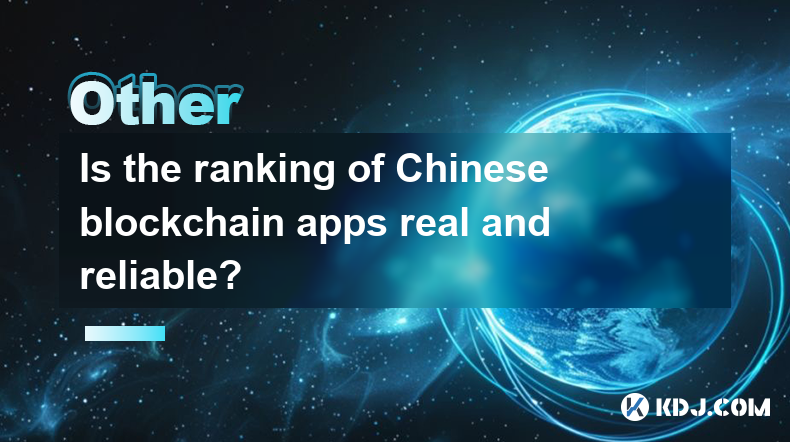
Is the ranking of Chinese blockchain apps real and reliable?
Apr 04,2025 at 09:01pm
The ranking of Chinese blockchain apps has become a topic of interest for many in the cryptocurrency community, as it provides insights into the popularity and adoption of blockchain technology within China. However, the reliability and authenticity of these rankings are often questioned. This article aims to delve into the factors that influence these ...
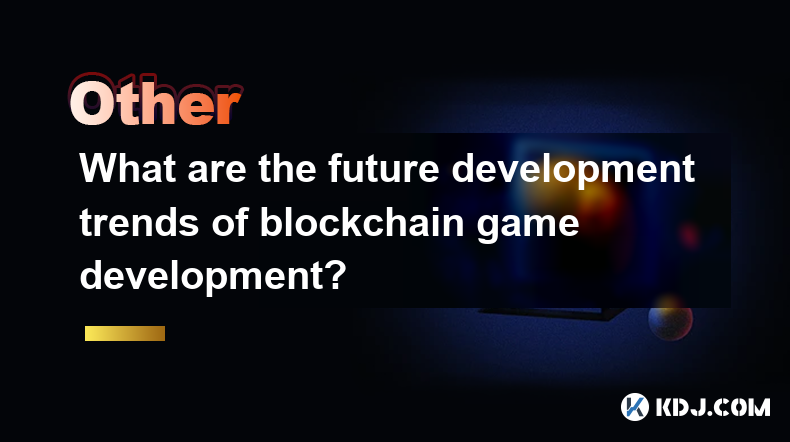
What are the future development trends of blockchain game development?
Apr 03,2025 at 05:00am
Blockchain technology has revolutionized various industries, and gaming is no exception. As we look to the future, several trends are set to shape the development of blockchain games. These trends not only promise to enhance the gaming experience but also to integrate blockchain technology more seamlessly into the gaming ecosystem. Let's explore these t...
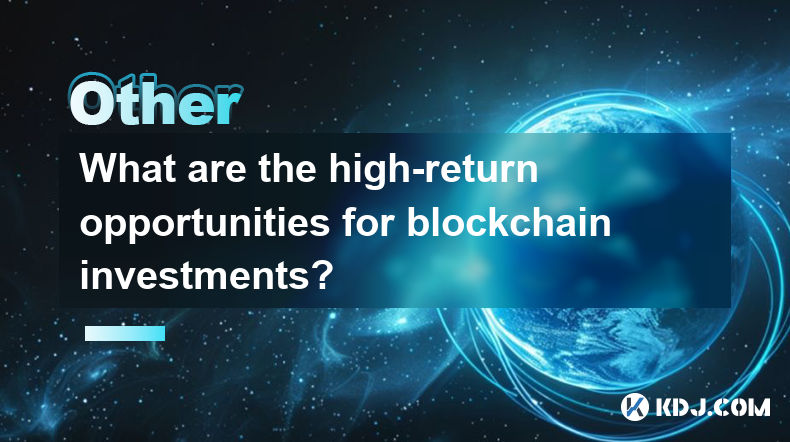
What are the high-return opportunities for blockchain investments?
Apr 05,2025 at 02:35pm
Blockchain technology has revolutionized the financial world, offering numerous high-return investment opportunities. These opportunities span various sectors within the cryptocurrency ecosystem, including cryptocurrencies, decentralized finance (DeFi), non-fungible tokens (NFTs), and blockchain startups. Each of these areas presents unique risks and re...
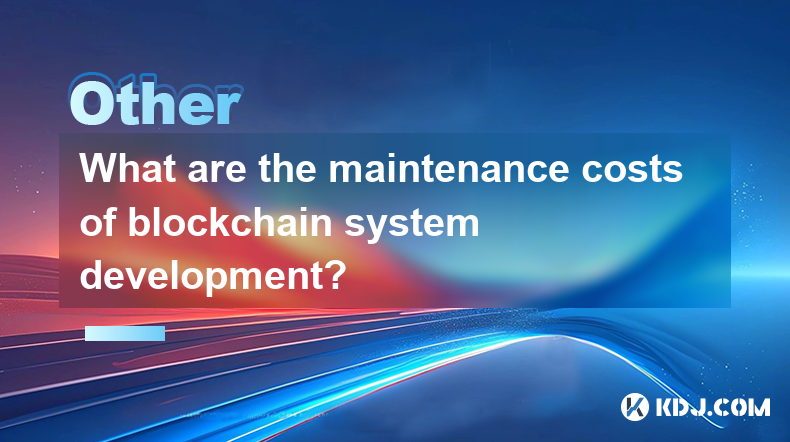
What are the maintenance costs of blockchain system development?
Apr 03,2025 at 06:07pm
The maintenance costs of blockchain system development are multifaceted and depend on various factors. These costs can include technical maintenance, security updates, infrastructure expenses, and personnel costs. Understanding these elements is crucial for anyone planning to develop or maintain a blockchain system. Technical MaintenanceTechnical mainte...
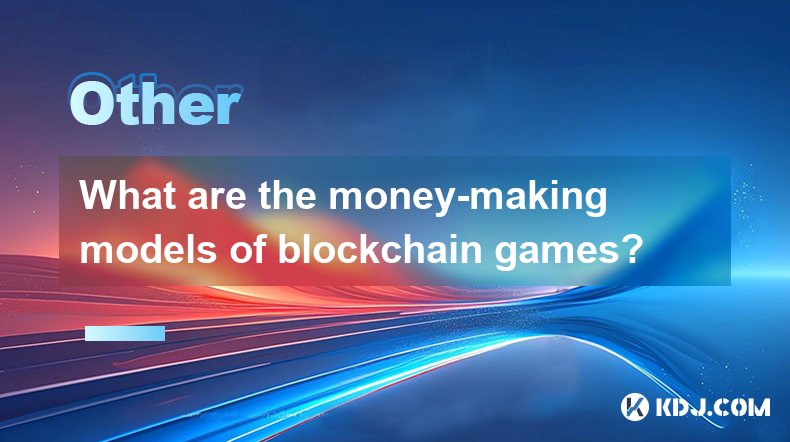
What are the money-making models of blockchain games?
Apr 04,2025 at 02:00pm
Blockchain games have emerged as a revolutionary way for players to earn real money while enjoying their favorite pastime. These games leverage the power of blockchain technology to create unique money-making models that benefit both the players and the developers. In this article, we will explore the various money-making models of blockchain games and ...
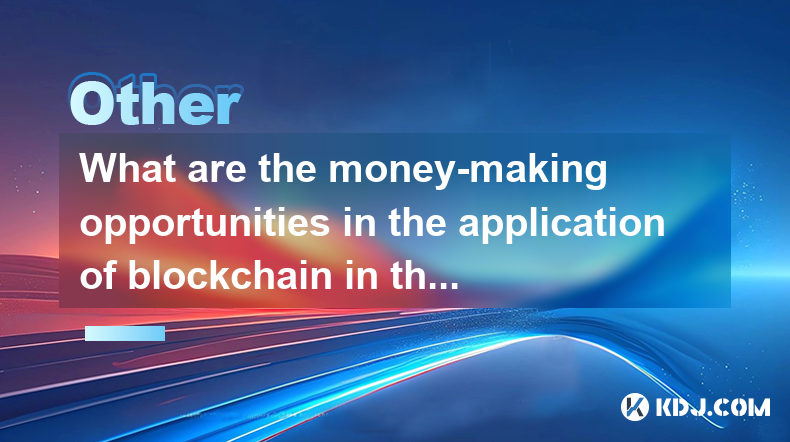
What are the money-making opportunities in the application of blockchain in the field of Internet of Things?
Apr 05,2025 at 10:35pm
The integration of blockchain technology with the Internet of Things (IoT) presents numerous money-making opportunities. Blockchain, with its decentralized and secure nature, can revolutionize how IoT devices interact, manage data, and conduct transactions. This article will explore various avenues where entrepreneurs, developers, and investors can capi...

Is the ranking of Chinese blockchain apps real and reliable?
Apr 04,2025 at 09:01pm
The ranking of Chinese blockchain apps has become a topic of interest for many in the cryptocurrency community, as it provides insights into the popularity and adoption of blockchain technology within China. However, the reliability and authenticity of these rankings are often questioned. This article aims to delve into the factors that influence these ...

What are the future development trends of blockchain game development?
Apr 03,2025 at 05:00am
Blockchain technology has revolutionized various industries, and gaming is no exception. As we look to the future, several trends are set to shape the development of blockchain games. These trends not only promise to enhance the gaming experience but also to integrate blockchain technology more seamlessly into the gaming ecosystem. Let's explore these t...

What are the high-return opportunities for blockchain investments?
Apr 05,2025 at 02:35pm
Blockchain technology has revolutionized the financial world, offering numerous high-return investment opportunities. These opportunities span various sectors within the cryptocurrency ecosystem, including cryptocurrencies, decentralized finance (DeFi), non-fungible tokens (NFTs), and blockchain startups. Each of these areas presents unique risks and re...

What are the maintenance costs of blockchain system development?
Apr 03,2025 at 06:07pm
The maintenance costs of blockchain system development are multifaceted and depend on various factors. These costs can include technical maintenance, security updates, infrastructure expenses, and personnel costs. Understanding these elements is crucial for anyone planning to develop or maintain a blockchain system. Technical MaintenanceTechnical mainte...

What are the money-making models of blockchain games?
Apr 04,2025 at 02:00pm
Blockchain games have emerged as a revolutionary way for players to earn real money while enjoying their favorite pastime. These games leverage the power of blockchain technology to create unique money-making models that benefit both the players and the developers. In this article, we will explore the various money-making models of blockchain games and ...

What are the money-making opportunities in the application of blockchain in the field of Internet of Things?
Apr 05,2025 at 10:35pm
The integration of blockchain technology with the Internet of Things (IoT) presents numerous money-making opportunities. Blockchain, with its decentralized and secure nature, can revolutionize how IoT devices interact, manage data, and conduct transactions. This article will explore various avenues where entrepreneurs, developers, and investors can capi...
See all articles





















































































